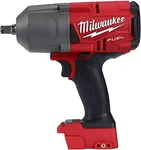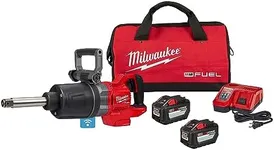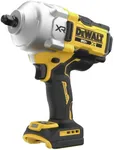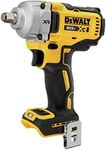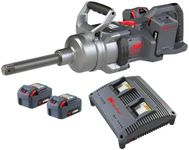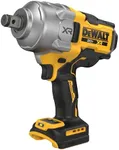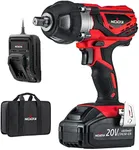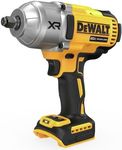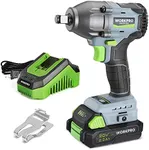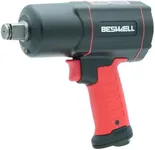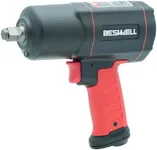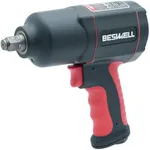Buying Guide for the Best Cordless Impact Wrenches For Automotive Use
Choosing the right cordless impact wrench for automotive use can make your work much easier and more efficient. These tools are essential for tasks such as changing tires, loosening tight bolts, and performing various maintenance tasks on vehicles. When selecting a cordless impact wrench, it's important to consider several key specifications to ensure you get a tool that meets your needs and provides the best performance for your automotive projects.TorqueTorque is the rotational force that the impact wrench can apply to a bolt or nut. This spec is crucial because it determines the tool's ability to loosen or tighten fasteners. Torque is measured in foot-pounds (ft-lbs) or Newton-meters (Nm). For automotive use, you'll typically want a wrench with at least 150 ft-lbs of torque for light tasks, while heavy-duty tasks may require 300 ft-lbs or more. Consider the types of vehicles and the specific tasks you'll be performing to choose the right torque level.
Battery VoltageBattery voltage indicates the power potential of the cordless impact wrench. Common voltages for these tools range from 12V to 20V. Higher voltage generally means more power and longer run time. For automotive use, a 18V or 20V impact wrench is often preferred as it provides a good balance of power and portability. If you need a lighter tool for occasional use, a 12V model might suffice. Think about how often and for what purposes you'll be using the wrench to determine the appropriate voltage.
Battery CapacityBattery capacity, measured in ampere-hours (Ah), determines how long the battery will last on a single charge. Higher capacity batteries (e.g., 4.0Ah or 5.0Ah) will provide longer run times, which is beneficial for extended use. For automotive work, a battery with at least 2.0Ah is recommended, but if you plan on using the tool frequently or for longer periods, opting for a higher capacity battery can reduce downtime. Consider your work habits and the availability of spare batteries when choosing the capacity.
Speed SettingsSpeed settings refer to the number of revolutions per minute (RPM) the impact wrench can achieve. Variable speed settings allow for greater control over the tool, which is important for different tasks. For example, lower speeds are useful for starting bolts to avoid cross-threading, while higher speeds are better for quickly removing fasteners. Look for a wrench with multiple speed settings or a variable speed trigger to give you the flexibility needed for various automotive applications.
Weight and ErgonomicsThe weight and ergonomics of the impact wrench affect how comfortable it is to use, especially for extended periods. A lighter tool (under 5 pounds) is easier to handle and reduces fatigue, but it may have less power. Ergonomic features like a comfortable grip, balanced design, and anti-vibration technology can make a big difference in user comfort. Consider how long you'll be using the tool and whether you'll be working in tight spaces to choose a model that feels comfortable and manageable.
Anvil SizeThe anvil size refers to the diameter of the drive that holds the socket. Common sizes for automotive use are 1/4-inch, 3/8-inch, and 1/2-inch. A 1/2-inch anvil is the most versatile and powerful, suitable for most automotive tasks, including lug nuts and larger bolts. A 3/8-inch anvil is lighter and more compact, ideal for smaller fasteners and tight spaces. Choose the anvil size based on the types of fasteners you'll be working with most frequently.
Impact Per Minute (IPM)Impact Per Minute (IPM) measures how many times the hammer strikes the anvil per minute. Higher IPM means faster performance and more power to break loose stubborn fasteners. For automotive use, an IPM of at least 2,000 is recommended for general tasks, while more demanding jobs may require 3,000 IPM or higher. Consider the types of fasteners and the difficulty of the tasks you'll be performing to determine the appropriate IPM for your needs.

